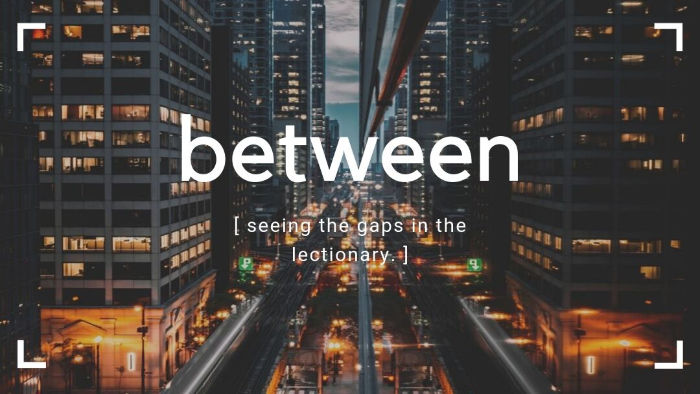
A look at the gaps in the lectionary.
This week: the gap between the Passion and Easter
The text: none
One of the most delightful parts of the history of faith is the famous absence of a gap between the Passion and the Resurrection stories. We want to know about the time between the closing of the tomb and when it is found empty.
This time, often referred to as Holy Saturday, is a time of fruitful speculation. And I personally love the medieval obsession with the harrowing of hell. It places the focus, not on the blessing of God’s grace, but on the vindicating authority of God—which is a way more interesting response for our time at the end of Holy Week.
Of course, the real part is what we skipped over to get to the Passion, which I named last week and also preached about on Sunday. And if you are used to focusing only on the Passion and the Resurrection, then we have much more we must bring into the conversation.
Our need to expand how we see Holy Week is particularly true if we take the suggestion of scholars seeking reform of the church’s approach to the Passion. Most famous is the New Testament scholar, Amy-Jill Levine, who suggests anything short of reform is insufficient. But I would also say that this is true either way.
The relationship the church and its people have to the Passion feels guided, not by conviction in the death and resurrection of Jesus Christ as the reflection of God’s grace, but as the reflection of tradition.
The story of the Passion in a nutshell:
A Jewish rabbi and persona of God was killed as an insurrectionist by Rome after humiliating Jewish authorities and threatening the peace. And we are taught by that rabbi, Jesus, that he is to be the Messiah who defies expectations, reigning through love and peace, not conquering and killing.
When we flesh it out more, we can easily interpret this through the lens of God’s love and grace. And let us not forget the role of sacrifice as the antidote to conquering, generosity as the antidote to violence, and equality as the antidote to empire.
And yet, it seems all too easy for us to name the Messiahship of Jesus as Peter does. Even as Jesus says it is different and we know it is different.
But we don’t actually desire it to be different. We want the power and the authority—not because King Jesus would be the “good king” we can’t have on earth, but to authenticate the ways of the church and tradition.
When we speak of the reign of Christ, we aren’t just rejecting the powers of the world and accepting Jesus’s vision intellectually. We are championing a way of being ourselves that rejects the powers of this world. Something that seems absent from any experience of Holy Week I’ve ever had in the church.
I worry that our sense of the Passion and the Resurrection are too easy—without matching the character reflected in the person of Jesus and his priorities. Particularly around money, social order, and distribution of power.
Perhaps these two Sundays bookending a week of special devotion are trying to do too much. And maybe we aren’t all that interested in addressing that idea. Not because we have a problem with Jesus’s teaching. But focusing on it always inconveniences our work of Holy Week.
